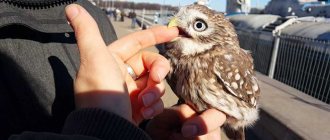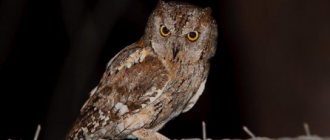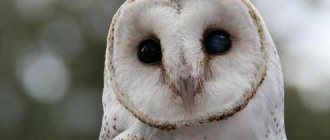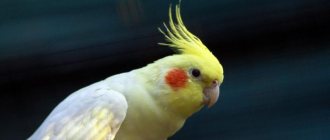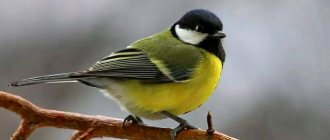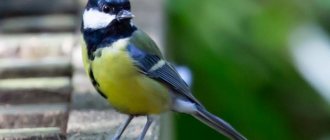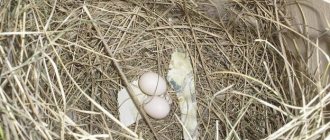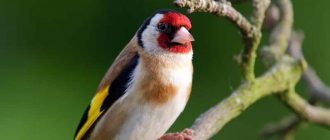Scops owl, polar owl, long-eared owl, barn owl... It is believed that representatives of these birds are found only in dense northern forests, but now these birds of prey often become affectionate and beloved pets living in city apartments.
And the first question that every owner is involuntarily forced to ask when deciding to acquire such exotic living creatures in their own home comes down to how long an owl lives. This is understandable, because you really want your pet to please its owners for as long as possible.
Even an experienced ornithologist cannot give a clear answer to the question of how many years an owl lives at home and in the wild. The fact is that the life expectancy of owls depends not only on the species, but also on the conditions of detention and even the latitudes in which the bird lives. It is believed that owls live much longer in captivity than in the forest. This opinion is both true and false.
Factors influencing the lifespan of an owl in the wild:
- The number of small rodents, mammals and amphibians in the bird’s habitat area.
- Climate, which affects the duration of hibernation of animals that are the main food of the owl.
- Presence of larger predators in the same region.
- Urbanization processes and ecology.
In addition, many birds become random targets during hunting or fall under the wheels of cars when flying onto highways at night. Deforestation, as a consequence of human activity, also leads to mass migrations and extinction of animals and birds, including owls. An important role in this matter is played by such quality of owls as complete fearlessness, which does not allow them to hide and escape from possible danger.
Origin
It is believed that the first owls appeared approximately 65 million years ago, during the Eocene period. However, the remains found indicate that their appearance was far from modern. The species of this bird that lived during that period of time are classified into separate genera: Eostrix, Strigogyps and others. They are now considered extinct. Modern owls evolved about a million years ago.
Their hunting method significantly influenced their evolution.
Owls stand motionless, listening to the slightest rustles. They are able to accurately determine the position of the target and the distance to it. Having prepared itself, the predator takes off and grabs the prey with its claws. This is why owls switched to a nocturnal lifestyle, since it is easier to maintain the element of surprise. In the future, this was reflected in the appearance and characteristics of the body. Interesting fact : some species of owls can hunt during daylight hours. For example, these include individuals living in the Arctic, where the polar day can last more than 24 hours.
Description
The color of most species contains dark tones, which allows them to remain unnoticed at night and makes hunting easier. Most species have gray, black and dark brown colors on their feathers. Moreover, almost always one shade is predominant, and the rest are present in the form of spots.
Owl head close up
The owl's head is large and round in shape. In the center there is a short beak, and on the sides of it there are large eyes. Due to the structural features of their necks, owls can turn their heads 270 degrees. The bird has a wide viewing angle, and thanks to its excellent vision, it is able to discern any details of the surrounding space. Owls see the world in black and white.
Interesting fact : owls' pupils always look forward, since the bird cannot rotate its eyes. But this is easily compensated for by the large angle of rotation of the neck.
The owl's body is massive, its front protrudes forward. The bird stands on thick paws, at the ends of which long claws protrude.
Diseases
You can monitor the health of the bird by the appearance of the droppings.
If it has become a greenish tint, then we can say with a high degree of probability that the bird is sick.
Owl excrement is in the form of a white puddle, in which there are solid dark inclusions.
In addition, an experienced owner will easily notice changes in the behavior of a feathered pet.
If a predator refuses food, becomes lethargic and apathetic, you should contact a veterinary hospital.
Owl sizes
Comparison of the sizes of different species of owls.
Eagle owls are considered the largest of the family. Their sizes reach up to 70 cm. In second place in terms of size is the white owl. Adults can stretch up to 65 cm. Small species include the elf owl. Its dimensions do not exceed 14 cm, and the moustache owl is 18 cm.
The average dimensions of other species are in the range from 35 to 45 cm. These sizes allow you to hunt small birds and animals without encountering serious resistance.
What do owls eat
It is known for sure that owls do not feed their offspring with semi-digested food, like some other birds. But the chicks still cannot eat meat. In addition, meat does not contain enough calcium - and it is very important for normal skeletal development.
Miniature Elf Owl
That is why in the first days of life of the chicks, owls bring them only insects. Their size depends on the type of owl and the region where it lives. For example, some feed their babies ants, grasshoppers and moths. Others do not disdain centipedes, spiders and even scorpions. For example, the tiny elf owl (also known as the cactus owl) often brings scorpions to feed its young. True, so that the prey does not harm the offspring, its sting is carefully torn off.
Character and lifestyle
Each species of owl has individual habits and characteristics. Some live in one territory all their lives and leave it only on rare occasions. One of these is the eagle owl. But certain species periodically migrate to other lands, for example, in winter the snowy owl flies from the tundra to the south.
Interesting: Crow


